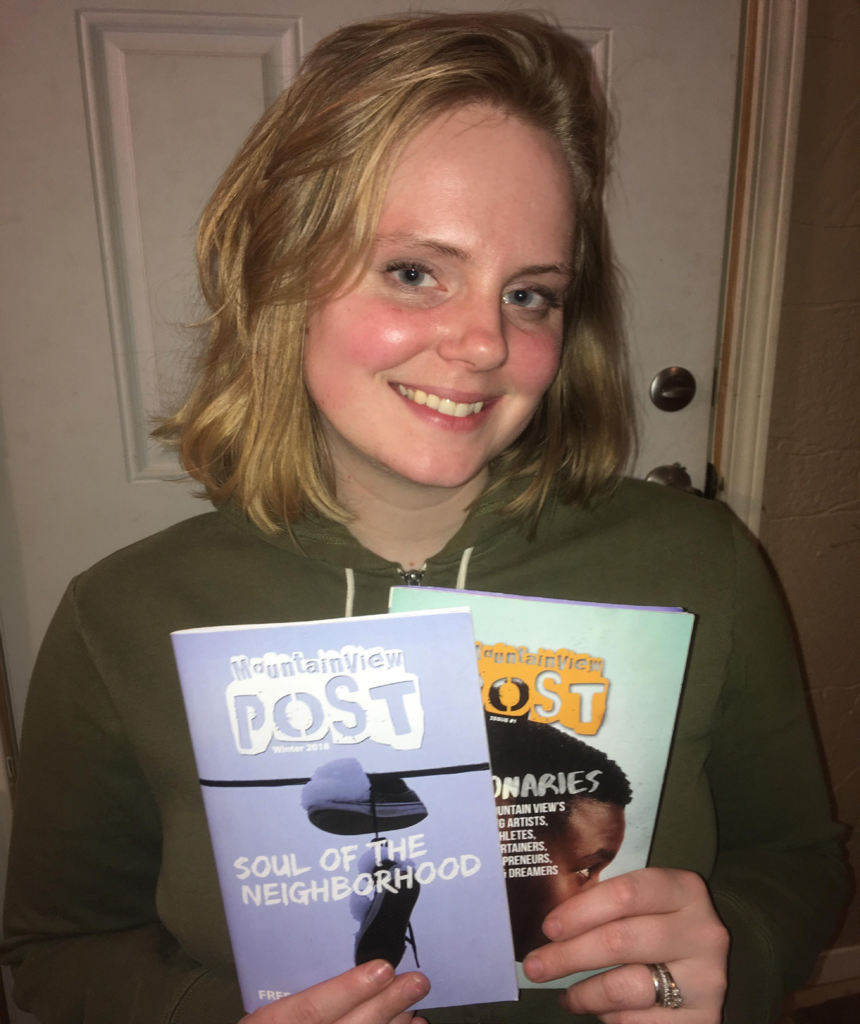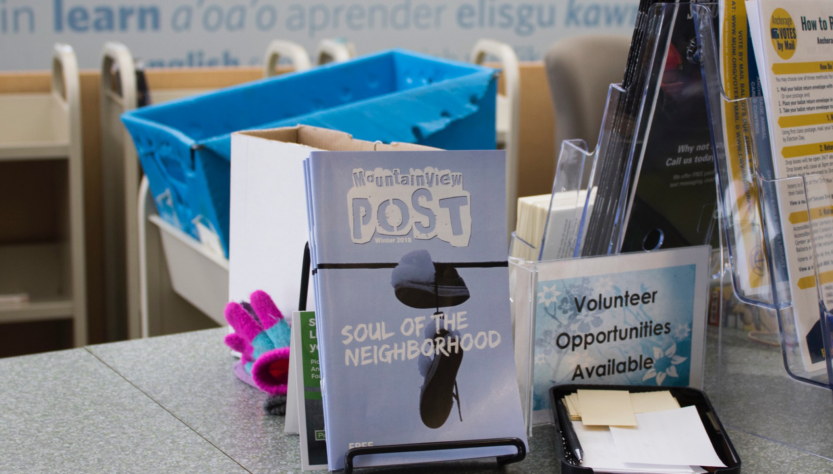With a lack of publications, journalists take reporting into their own hands
During a time when media is changing to cover the underreported or not reported at all, a new form of journalism is emerging. From the dozens of staff laid off at the state’s largest newspaper to Anchorage’s alt-weekly written solely by contributors, Alaska journalism is missing the mark on the local stories. Alaskan writers are taking journalism into their own hands through niche and hyperlocal reporting.
Kirsten Swann began the Mountain View Post blog in spring of 2014 shortly after she moved into the Mountain View area. At the time, she felt like all of the stories coming out of the neighborhood addressed crime and occasionally, diversity.
“That’s all people really heard, and it created this perception for a lot of people for what the neighborhood was, and [it’s] even after living there for a short period of time, it was obvious that that was one tiny little facet of it. There was so much more to it,” Swann said.
Swann started the blog as a way to cover some of those other stories. When the blog began, she didn’t have the vision of it becoming a magazine until a friend asked if she wanted to create it in a print form. She just published her second issue of the magazine, which can be found at the Mountain View Public Library.

Swann isn’t the only person in the Anchorage community who created a new source for Alaskans. Jordan Bird and Fernanda Conrad are launching the first print publication of their magazine, Wildheart, this summer. The magazine focuses on “nurturing our wild hearts every day” and featuring Alaskan women and the “frostbitten sisterhood.”
Cody Liska was born and raised in Anchorage and graduated from the University of Nevada, Reno with a degree in journalism before he came back to Alaska.
Liska would spend weeks researching editors of national publications and handwriting them letters. He found that he would get around a 90 percent response rate from this method. After deep diving into national publications, Liska did the same with local magazines and realized they weren’t reporting stories in Alaska in the way that he thought they should be.
Crude Magazine started in 2013 with Sebastian Garber, which features urban journalism, snowboarding, skateboarding, snowmachining, music and more. For Liska, it isn’t about creating a business that will bring him a huge profit. Reporting on what matters in the state and in the way he believes in is just as important as any job.
“As long as we can make enough money to put this publication out there and have these editorials on the web and connect with the people that we want to connect with, if at the end of the day, all of this amounts to [getting] the job that I’ve always wanted to, I’m still going to try and produce an issue of Crude once every one year or two years or three years just because I think it’s important,” Liska said.
Anchorage’s Spanish-speaking community found a gap in journalism after the Mexican Consulate moved to Seattle, Washington. That was until Sol de Medianoche came along. The Hispanic community had relied on the Mexican Consulate for documentation protection, representation and more. Lina Mariscal and a group of individuals decided the community needed to have a means to inform people about what was happening. Mariscal manages the advertising for the newspaper as well as community interaction.
“From there, we just started thinking about, ‘What about a newspaper?’” Mariscal said. “Ganas is all it takes. Ganas is the desire to do something or to get somewhere. If you don’t have that, then you won’t.”
Gabriela Olmos, editor of Sol de Medianoche, was previously the editor of an art magazine in Mexico for 17 years. “We have been in the challenge of finding ourselves. Like any publication when it starts, you don’t really know how your audience will react…I think we are getting closer to the heart of our people,” Olmos said. Sol de Medianoche, which translates to “Midnight Sun,” began in the spring of 2016 as Anchorage’s bilingual newspaper. The publication started off as quarterly, but after three issues, it switched to bi-monthly. They print 3,000 issues every two months. Anchorage and Alaska are growing every day and so is the hyperlocal journalism scene. Local Alaskans have stepped up to the plate and created their own publications from the ground up.
Samantha is majoring in journalism and political science at the University of Alaska Anchorage. She is the executive editor of The Northern Light, UAA’s student-run newspaper and has previously interned at Alaska Dispatch News and Alaska Public Media. Samantha loves pad thai, london fogs and a good baseball tee.

